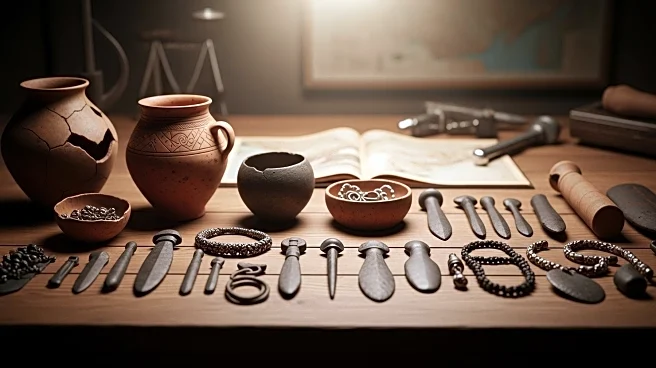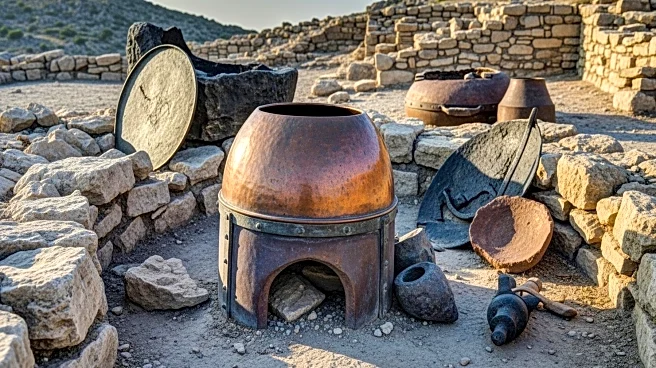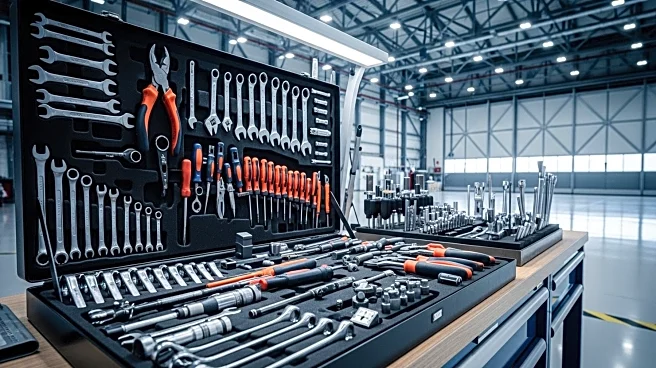What's Happening?
A recent study published in the Journal of Archaeological Science reveals new insights into the origins of iron metallurgy at a 3,000-year-old smelting workshop in Kvemo Bolnisi, Georgia. The site, originally analyzed in the 1950s, was believed to be an early iron smelting location due to the presence of iron oxide minerals. However, researchers have now found that ancient copper smelters used iron oxide to enhance copper yield, suggesting that experimentation with iron-rich materials by copper workers was crucial to the development of iron smelting techniques. This discovery challenges previous assumptions about the origins of iron production and highlights the role of copper smelters in the transition from the Bronze Age to the Iron Age.
Why It's Important?
The findings at Kvemo Bolnisi provide significant insights into the technological advancements that marked the transition from the Bronze Age to the Iron Age. Understanding the origins of iron metallurgy is crucial for historians and archaeologists as it sheds light on the development of tools and weapons that shaped ancient civilizations. The study suggests that copper smelters played a pivotal role in the invention of iron smelting, which eventually led to widespread iron production. This technological shift had profound impacts on societies, enabling the rise of powerful armies and the construction of infrastructure during the Industrial Revolution.
What's Next?
Further research and excavation at the Kvemo Bolnisi site may uncover more evidence about the early use of iron in copper smelting processes. Archaeologists and historians are likely to continue exploring other ancient sites to better understand the evolution of metallurgy. The study's findings may prompt a reevaluation of existing theories regarding the origins of iron production, potentially leading to new insights into ancient technological innovations.
Beyond the Headlines
The discovery at Kvemo Bolnisi highlights the importance of interdisciplinary research in archaeology, combining modern geological and materials science techniques to uncover historical secrets. This approach not only provides a deeper understanding of ancient technologies but also emphasizes the interconnectedness of different fields in advancing knowledge about human history.











